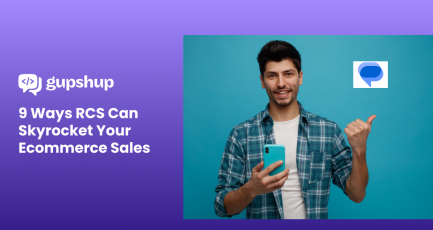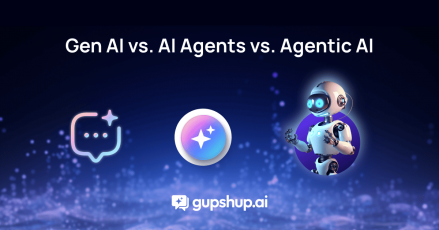Passively Drive Revenues with Set and Forget Conversational Marketing Automation

The one growth marketing strategy to nurture customers and encourage action in eCommerce
Who isn’t enamored with the idea of passive income! Where your investments make money while you sleep (or party, or holiday..). Whether it’s rental income, dividend on stocks, royalties from a book or income from your YouTube channel – passive income can keep money flowing in without much additional labour.
The same principle applies to growth marketing, where manual efforts do not scale, and can lead to errors, missed opportunities and sub-par performance. Marketing leaders have a budget, design creative brand strategies, invest heavily in ads, but if the potential customers leave without taking the desired action, that is money gone into thin air.
Marketing automation or triggered campaigns is the perfect antidote – it targets customers based on their actions or behavior. Different events are used as triggers to initiate a notification – and it’s relatively common on channels like email, SMS, in-app and app push notifications, and chances are as a marketer you’ve used one of the 1000+ tools available to set up these push alerts.
What’s new and unexplored, however, is contextual, in-the-moment interactive marketing on rich messaging channels. What if you could trigger a flow on WhatsApp or RCS based on a customer action, for example, when they receive or read a message, sign up on your webstore, add a product to their cart but don’t checkout, cancel an order or provide feedback.

If done right, conversational marketing automation not only takes away operational overheads and combats revenue loss, but it also actually makes the customers feel valued. The idea is simple and surprisingly effective but grossly underutilized.
Take the example of eCommerce – I remember when I meant to order a birthday gift for my Mum, but got distracted due to a ping or someone at the door. Being scatterbrained like me is just one reason for forgetting to order, but data shows that over 70% of customers abandon their cart! And a huge part of that is recoverable. A triggered cart recovery campaign sees a whopping 50% lift in conversions, indicating that customers appreciate the timely reminder to complete purchase of products they genuinely desire. Of course, there’s a fine line between being helpful and being creepy – and as long as it’s expected and helpful, it’s a win-win for both brands and customers.
Automated marketing need not be impersonal
To get this balance right, marketers start by defining the various trigger events – when a user signs up, places an order, cancels an order, hits a revenue threshold and so on. And then choose what happens next – on placing an order, the user gets confirmation along with a helpful tip on how to use the product or a reward. While doing this, consider the user persona and segment – a high value customer gets a loyalty tier upgrade, while an infrequent buyer gets a limited time offer to drive frequency and a new buyer gets a how-to product video.
Automatic follow-ups build better relationships when they are personalized and contextual. To better differentiate customers, further filter these behavior based segments using their attributes – these could be demographics like the user’s location, gender, preferences (vegan, casual wear, electronics geek, planet friendly etc.) or their business metrics like lifetime revenue, average order value. This level of granular categorization ensures that automated does not equal impersonal.
Making marketing interactive with chatbots
Conversations are the new UX, and the marketing world is seeing a seismic shift in how they engage customers across their lifecycle. Chatbots no longer have the reputation of being dumb and useless, they are not just accepted, but even expected by customers. Campaign bots can either be designed with preconfigured responses or utilize AI to build relations and build conviction with customers. You can engage customers, qualify and convert them, aid product discovery, provide shopping assistance, upsell relevant products, send order updates, book appointments, reschedule deliveries, seek information about their availability and more with interactive campaigns.
Conclusion
There is no platform that has the rate of engagement that messaging has today. Emails and push notifications are great, but if you’re looking for alpha performance without having to add multiple hours to your day, conversational marketing automation is where you need to be.
Discover the transformative potential of conversational for enterprises and its role in driving growth with these resources:
- Gupshup at MWC Barcelona: Making Online Shopping More Conversational in 2024
- Embracing the Conversational Future: Insights from Gupshup Conversations
- Accelerates domain specific applications of GPT-3 to drive conversational engagement
- Hosting a Conversational Engagement Deployment On-Premise V/s On-Cloud: What’s Best?
- Conversational Support is Redefining D2C Customer Lifecycle
- Conversational interface design – The new UX frontier




